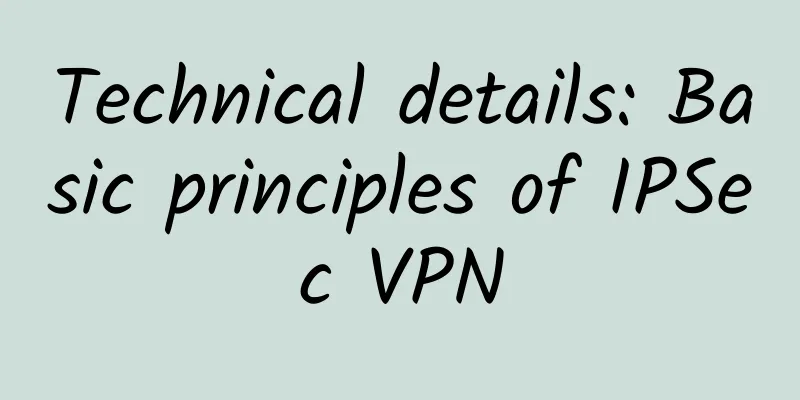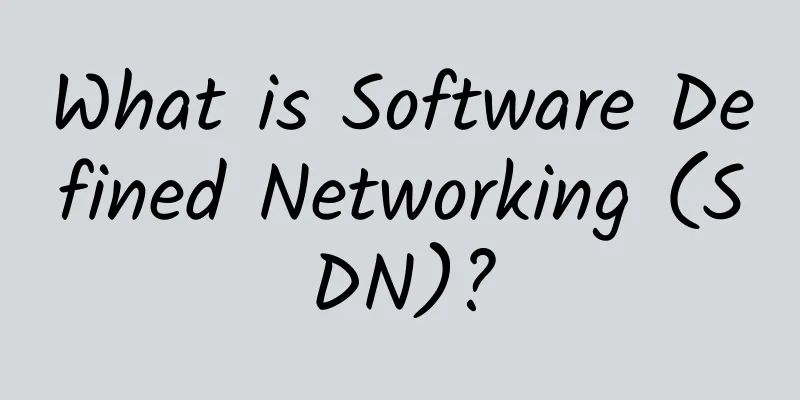Technical details: Basic principles of IPSec VPN

|
IPSec VPN is a technology with a very high click rate among current VPN technologies. It provides both VPN and information encryption technologies. This column will introduce the principles of IPSec VPN. IPSec VPN Application Scenarios IPSec VPN application scenarios are divided into three categories:
VPN is just an application of IPSec. IPSec is actually the abbreviation of IP Security. Its purpose is to provide high security features for IP. VPN is a solution generated under the way to achieve this security feature. IPSec is a framework architecture, which consists of two types of protocols:
Why is AH less used? Because AH cannot provide data encryption, all data is transmitted in plain text, while ESP provides data encryption; secondly, AH cannot traverse NAT because it provides data source confirmation (once the source IP address changes, AH verification fails). Of course, IPSec can use AH and ESP at the same time to achieve the most complete security features in extreme cases, but this solution is extremely rare. IPSec encapsulation mode After introducing the scenarios of IPSec VPN and the composition of the IPSec protocol, let's take a look at the two encapsulation modes provided by IPSec (Transport mode and Tunnel mode). The above figure shows the encapsulation structure of the transmission mode, and then compares it with the tunnel mode: You can find the difference between transport mode and tunnel mode:
From the above figure, we can also verify the difference between AH and ESP introduced in the previous section. The following figure explains the scenarios in which transport mode and tunnel mode are applicable. From the comparison of this picture we can see that:
Although the tunnel mode can be applied to any scenario, it requires an extra layer of IP header (usually 20 bytes in length) overhead, so in the PC-to-PC scenario, it is recommended to use the transport mode. To give you a more intuitive understanding, let's look at the following figure to analyze why only the tunnel mode can be used in the Site-to-Site scenario: As shown in the figure above, if the traffic sent from the initiator's intranet PC to the responder's intranet PC meets the gateway's interest flow matching condition, the initiator uses the transport mode for encapsulation:
We use this proof by contradiction to cleverly explain why the transport mode cannot be used in the Site-to-Site case. We also propose the necessary and sufficient conditions for using the transport mode: the interest flow must be completely within the IP address range of the initiator and responder. For example, in the figure, the initiator IP address is 6.24.1.2 and the responder IP address is 2.17.1.2. Then the interest flow can be source 6.24.1.2/32 and destination 2.17.1.2/32. The protocol can be arbitrary. If the source and destination IP addresses of the data packet are slightly different, sorry, please use the tunnel mode. IPSec Negotiation In addition to some IPSec protocol principles, we are more concerned with the content of the protocol involving solution formulation:
Let's take the most common IPSec tunnel mode as an example to explain the IPSec negotiation process: The figure above describes the IPSec negotiation process triggered by the interest flow. Native IPSec does not have a negotiation process such as identity confirmation, and there are many defects in the solution, such as the inability to support identity confirmation and dynamic key update when the initiator's address changes dynamically. The IKE (Internet Key Exchange) protocol that appeared with IPSec is specifically used to make up for these shortcomings:
The security of IPSec is also reflected in the fact that the SA in the second phase is always unidirectional: As can be seen from the figure above, when negotiating the second phase of SA, SA is directional. The SA used by the initiator to the responder and the SA of the responder to the initiator are negotiated separately. The advantage of this is that even if the SA in one direction is cracked, it will not affect the SA in the other direction. This design is similar to the two-way lane design. Although IPSec is just a combination of 5 letters, the protocol functions it involves are numerous and the solutions are extremely flexible. This issue mainly introduces the basic principles of IPSec, and other aspects of IPSec will be introduced in the future. |
<<: 5 Network Troubleshooting Software, Which One Do You Use?
>>: 5G is here, where will the next explosion point of the Internet be?
Recommend
P2P Confession | I don’t produce content, I’m just a route planner for content delivery
When people mention P2P now, they will think of t...
SpartanHost: Seattle high-defense KVM 20% off, starting at $4 per month, 1G memory, 15GB NVMe hard drive, 2TB/10Gbps bandwidth
SpartanHost, also known as Spartan, is a foreign ...
How to quickly optimize your home Wi-Fi in 30 minutes? Alibaba engineers have a trick
Abstract: Modern people cannot live without mobile...
Network Slicing "Hot Pot Theory": Same Pot, Different Dreams
In the dog days of summer, when people are "...
Don’t worry anymore! Teach you how to quickly locate Eth-Trunk faults and easily solve network problems!
1. How to locate the problem that an Eth-Trunk in...
F5 Greater China Chief Technology Officer Wu Jingtao: Probeless real-time application big data collection engine implementation and AIOps realization
[51CTO.com original article] Recently, the WOT201...
Have you been caught? Wireless router settings like this pose security risks
Recently, cyberattacks on home wireless routers h...
Huawei launches Global Industry Vision 2025: Uncovering the industrial landscape of the intelligent world
Huawei recently released its Global Industry Visi...
Why do we need a Layer 3 switch? Seven indicators for selecting a Layer 3 switch in a monitoring system
Recently, a friend asked about the application of...
Arasaka: San Jose high-security VPS monthly payment starting from 100 yuan, AS9929 line
Arasaka Network LLC is a newly opened overseas VP...
Using data to speak, Hubo Technology helps improve college students' critical thinking and research capabilities
Recently, in order to enrich product functions an...
inetWS: $2/month KVM-2GB/30G SSD/100M unlimited traffic/7 data centers in Seattle, Phoenix, Chicago, etc.
inet.WS is a foreign hosting company founded in 2...
HTTPS 7-way handshake and 9 times delay
HTTP (Hypertext Transfer Protocol) has become the...
New Track and New Technology|Xinglan Technology was invited to participate in the "2022 API Security Innovation Salon Beijing"
On the morning of April 15, the "2022 API Se...
Global chip makers warn that global chip shortages will last for years
According to industry media reports, some well-kn...








![[Black Friday] spinservers: $49/month - E3-1280v5, 32G memory, 1TB NVme, 10Gbps bandwidth, San Jose/Dallas data center](/upload/images/67cabcf402984.webp)
